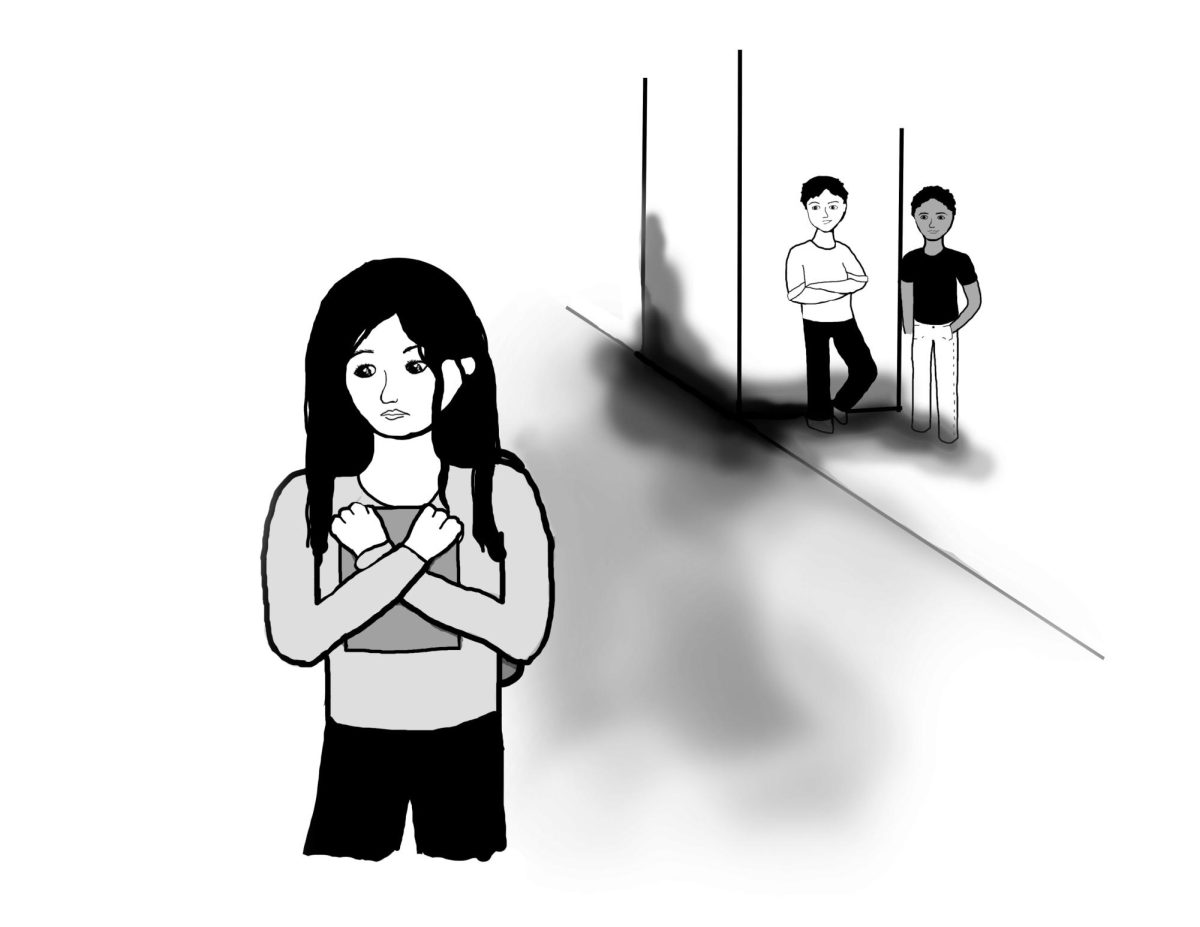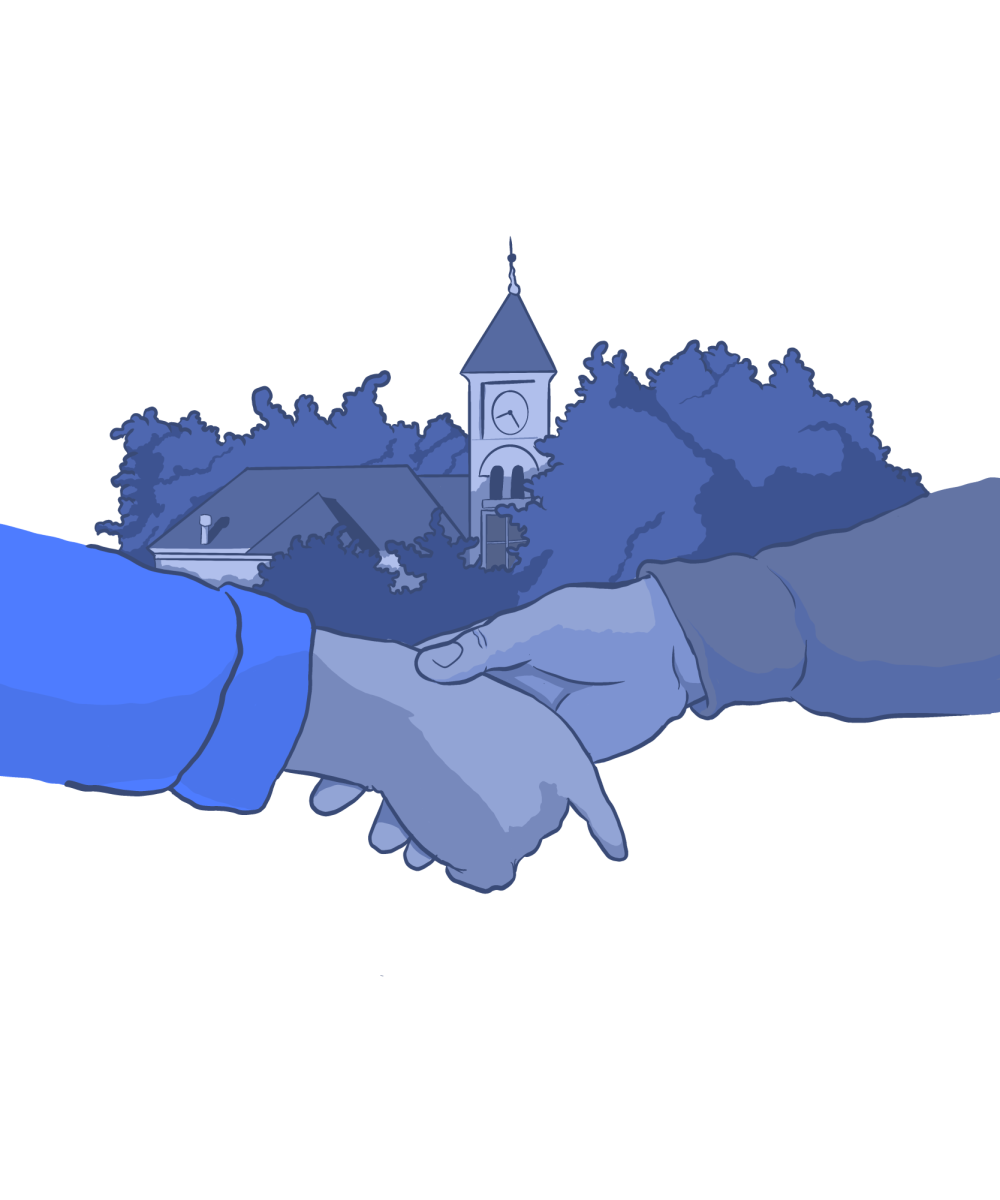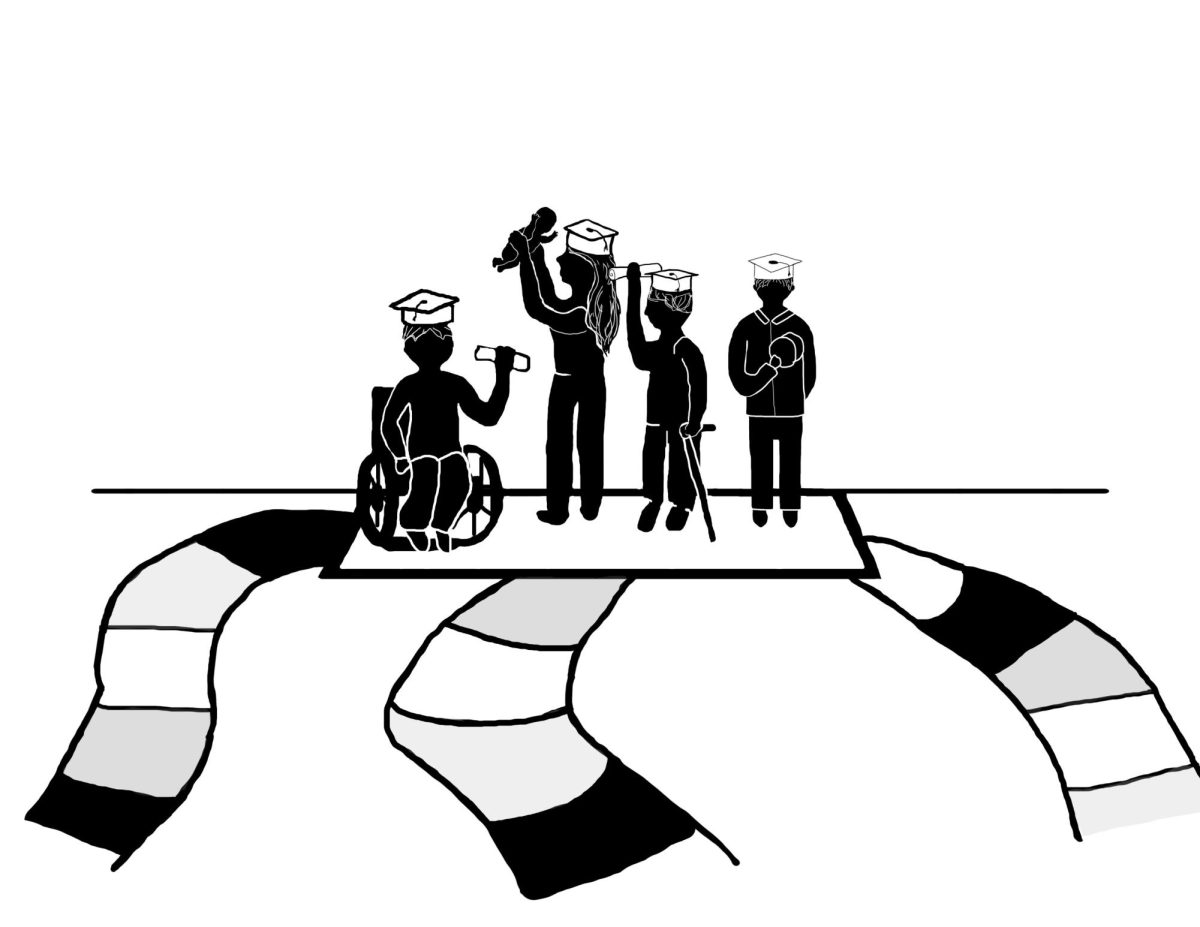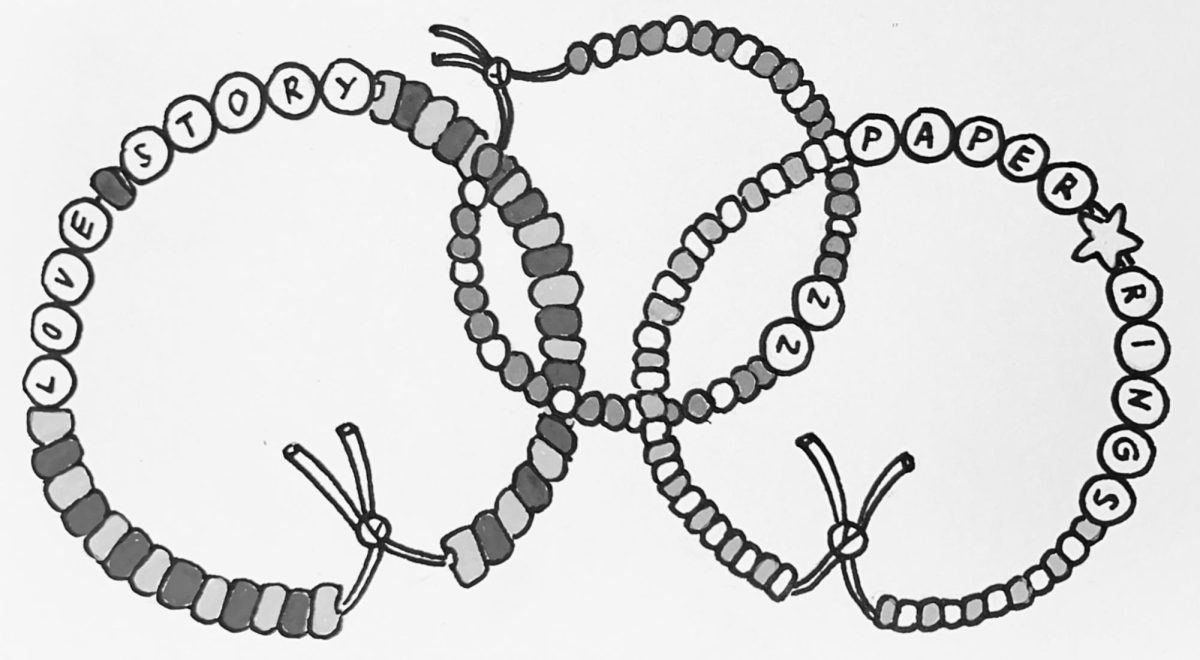Walking through campus, one sees a variety of different architectural styles, from all-brick residence halls like Prentiss to the romanesque Memorial Hall. Do any of these buildings have secrets hiding behind closed doors? Have the same buildings always been here, or was there something else long before our time on campus?
Reynolds Hall
No longer standing, Reynolds Hall stood between where the Science Building and Olin now stand. It was still standing in the 1970s when Kathryn Hill, a Whitman graduate and Walla Walla resident, attended Whitman. “It was an old brick classroom building covered with ivy,” she said. The original corner stone can be seen in the flower bed between the Science building and Olin.
Billings Hall
In Maxey’s current location once stood Billings Hall. It was a romanesque styled building similar to Memorial Hall, styled with stone and turrets. It was in Billings where Professor Deberah Simon, a Whitman graduate and current Professor of Chemistry, took French and German classes. She remembers it being a science building before that. Simon also recalls when Billings was torn down.
“It was May 24, 1972, we graduated on Sunday and they came Monday morning and tore it down. They kept it secret and came in with wrecking balls and smashed it completely. Professors were crying and taking pieces as souvenirs. It took them a while before they built Maxey, I don’t remember how long exactly. Oh, it was so pretty, it was just a beautiful building,” said Simon said.
Residence halls
In the late 1960s and early 1970s, Whitman campus was about 80% greek, according to Simon. All the freshman women lived in Anderson and the men in Jewett, while non first-year women lived in Prentiss and the men in Lyman. Only upper-classmen were allowed to live off campus in apartments. Simon recalls having bed checks and curfew hours while living in Theta section of Anderson Hall.
“Upper-class women sophomore year moved to Prentiss where there were six sororities. Independents lived in rooms in the basement. There were nasty yellow fluorescent lights and I was kind of scared to go down there. That was a big incentive to be in a sorority,” said Simon.
Hill recalls that, “The dorm just northeast of Prentiss Hall was called ‘New Dorm’ after it was built in ’70 or ’71 for a few years before it was renamed.”
This dorm is known now as Douglas. The man for whom it is named, Chief Justice William O. Douglas, did not want it named for him while he was still alive, so the college had to wait until he passed away to name the building.
Student union building/Reid Campus Center
The original student center of campus was a student union building (SUB) that stood where the outdoor tennis courts are now.
“It was covered inside by murals done by Ruth Fluno, the wife of one of the Professors. It was really cool, that was where the mail boxes were and everybody hung out there,” said Simon.
The SUB was moved to the current Reid parking lot location before construction of Reid Campus Center. White Temple Baptist Church stood in the current RCC location.
“Where Reid stands there used to be the White Temple Baptist Church. It was a huge white church with classic Greek columns and steps and the best part was a huge blue neon sign that said “White Baptist Temple Church,” said Simon.
The Church was torn down when Reid was built. Images of the Church and other campus buildings can be viewed at wallawallahistory.com/sitemap/index.html.
Cordiner Hall
When Cordiner was built in the fall of 1968, the college first had to buy up separate pieces of land. There was an older woman who owned a tiny white house on Boyer Avenue who agreed to sell the land to the college, but refused to move. Therefore, the college went ahead and built the hall. For a while, the little white house on the lawn remained.
“In her will, she said they could have the land after she died. I was gone from 1972 to 1981 and they tore it down some time during that period. But before that there was a little white house on the lawn and Cordiner was built around it,” said Simon.
The buildings on campus hold many secrets about their origins. As one pushes open the doors of Maxey after class, they can remember and envision another building that stood there decades ago.









